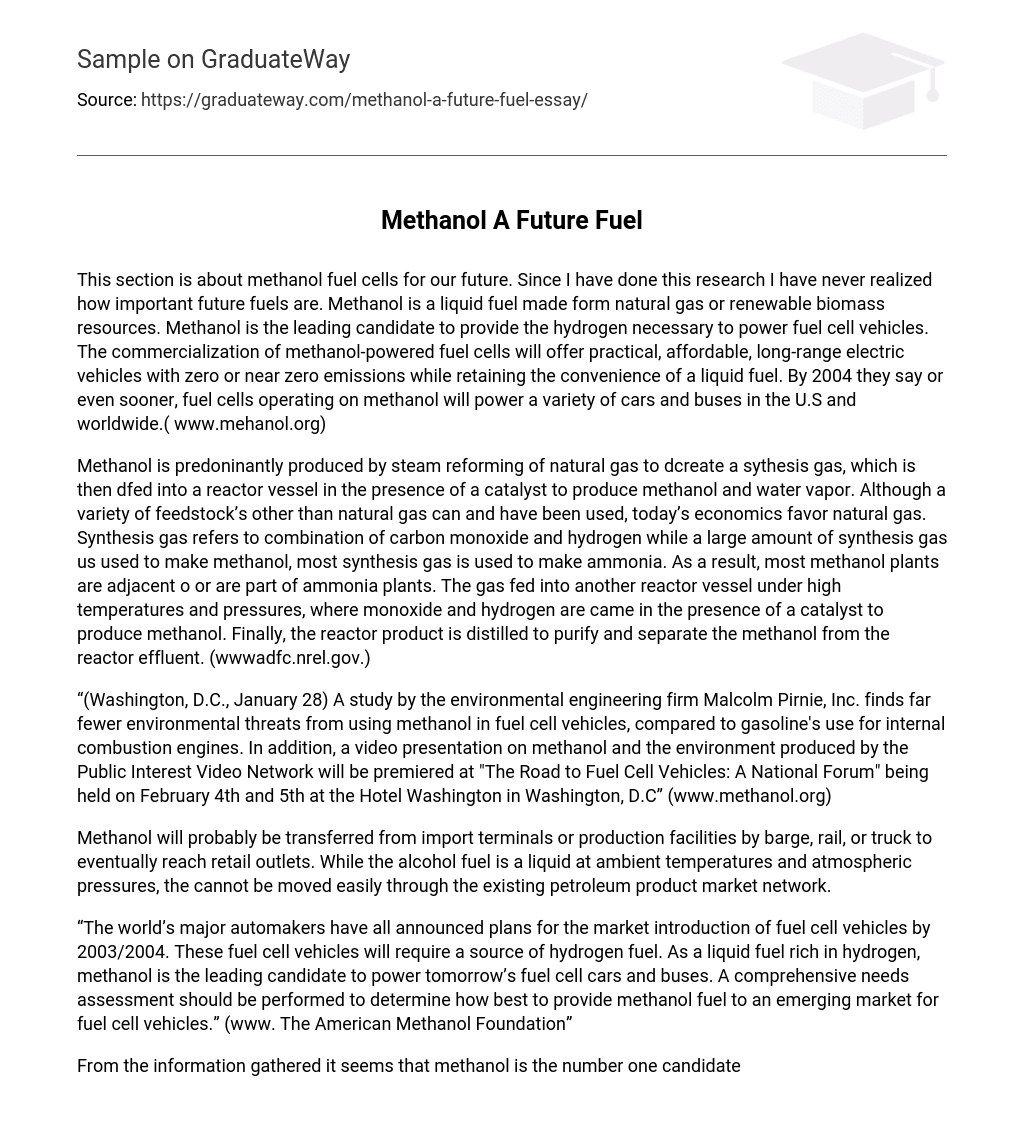The future importance of methanol fuel cells is discussed in this section. Research has shown that alternative fuels, like methanol derived from natural gas or renewable biomass sources, are crucial. Currently, methanol is the preferred option for supplying hydrogen to fuel cell vehicles. The availability of commercially viable methanol-powered fuel cells will make practical, affordable, and long-range electric vehicles with minimal or no emissions possible. Additionally, these vehicles will maintain the convenience of using liquid fuel. It is projected that by 2004, or potentially earlier, methanol-powered fuel cells will be utilized to power various cars and buses both in the United States and worldwide. (Source: www.methanol.org)
The primary method for producing methanol involves steam reforming of natural gas to create synthesis gas, which consists of carbon monoxide and hydrogen. This synthesis gas is then mixed with a catalyst in a reactor vessel to produce methanol and water vapor. Currently, natural gas is the preferred choice for this process due to economic reasons, although other alternatives have been used before. Despite most synthesis gas being used for ammonia production, a significant amount is still utilized for methanol production. As a result, many methanol plants are located near or integrated with ammonia plants. The synthesized gas is introduced into another reactor vessel where it undergoes high temperatures and pressures while interacting with a catalyst to form methanol. Finally, the final product from the reactor undergoes distillation to purify and separate the methanol from the remaining effluent.
(Source: www.adfc.nrel.gov)
A study conducted by Malcolm Pirnie, Inc. found that methanol used in fuel cell vehicles is less environmentally hazardous than gasoline used in internal combustion engines. The Public Interest Video Network has created a video presentation about the environmental effects of methanol, which will be premiered at “The Road to Fuel Cell Vehicles: A National Forum” event held on February 4th and 5th at Hotel Washington in Washington, D.C. (source: www.methanol.org)
Methanol can be transported from import terminals or production facilities by barge, rail, or truck in order to ultimately reach retail outlets. Despite being a liquid fuel under normal conditions, methanol presents difficulties when it comes to transportation through the existing infrastructure for petroleum products.
According to The American Methanol Foundation, major car manufacturers have announced plans to introduce fuel cell vehicles by 2003/2004. These vehicles will utilize hydrogen fuel, with methanol being the favored option due to its abundant hydrogen content. To meet the increasing demand for fuel cell vehicles, a comprehensive evaluation is required to determine the most effective method of supplying methanol as a fuel.
Based on the gathered information, major car manufacturers and the government are both giving importance to methanol as a fuel option for the future. They are working together to determine its path and address it accordingly. Moreover, this assessment intends to predict the future of methanol fuel and develop educational materials for consumers regarding its usage in fuel cell vehicles.
www.ADFC





